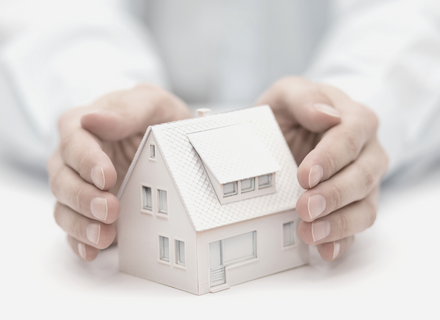5 ways to profit from ‘going green’ on your investment property

By Zarah Mae Torrazo
An expert is debunking the misconception that an eco-friendly investment property can’t produce significant financial rewards.
Managing director of MCG Quantity Surveyors Mike Mortlock said that it’s time for investors to do away with the trope that one can be a capitalist investor or an eco-warrior — but not both.
“I beg to differ because there are ways to improve your investment’s green credentials while boosting the rent and minimising your tax burden through cost write-offs and depreciation benefits,” he stated.
The expert noted that landlords and property investors should take initiative to “go green” after Aussie voters expressed their support for climate change action at the federal election this year.
“We have reached a point where the public values eco-friendly moves designed to help address climate action. ‘Think global, act local’ as the saying goes,” he said.
Mr Mortlock said that this initiative now extends to housing, highlighting that energy-rated designs are now a basic and necessary part of building approvals.
Aside from being environmentally friendly, he explained how having a “green” investment property can be financially beneficial to investors. “Energy saving measures in investment properties result in more tenant appeal — so, higher rents — lower running costs, depreciation benefits and a cleaner planet.”
With this, Mr Mortlock has enumerated five moves that property investors can make that could both help the planet and an investor’s bank account:
1. Heating and cooling
Mr Mortlock said that warming and cooling systems (e.g. air-conditioning systems and high-energy heaters) are proven to be major carbon emitters — which have detrimental effects on the planet.
But he offered that there are ways to reduce your property’s carbon footprint.
“Insulation to roof and wall cavities is an excellent start. For around $2,000, you can have your ceiling blanketed and this can be claimed as a capital works deduction,” he stated.
If the hefty price tag on insulation is daunting, Mr Mortlock recommended less expensive solutions. “The installation of a ceiling fan helps too, and if it costs less than $301, the outlay is fully depreciable on your next tax return.
“Then there’s window film which can keep out the heat in summer. A window tint will set you back between $50 and $100 per square metre in most instances and is a capital works deduction,” he said.
2. Power generation
Going off-grid is becoming highly appealing to most investors, as houses linked to the grid are required to cough up a flat supply charge, regardless of usage.
Mr Mortlock advised investors looking to go off-grid that there are ways to create independent energy sources on a small suburban block.
For starters, he recommended looking into solar power systems and battery storage, which are easy retrofits.
“While not cheap — a decent system installed will cost between $5,000 and $15,000 — they can be worth it. Apart from being appealing to tenants, installing solar allows you to depreciate its cost by 10 per cent per year under the diminishing value (DV) method,” he explained.
If the property has extra acreage, Mr Mortlock said that investors could evaluate the feasibility of installing a wind turbine.
“A wind turbine costing around $2,000 can generate formidable power. Best of all, depreciation benefits based on an effective life of 20 years gives you another 10 per cent per year via the DV method,” he said.
3. Water collection
Mr Mortlock also directed investors looking to become eco-warriors to utilise water tanks in the properties, which have been common in Australian homes for decades.
He said using such water for toilets and washing machines “makes sense” from an investor perspective, as they can keep the possibility of tenants having to pay excess water charges to a minimum.
“This can mean a rent boost for the right property,” he said.
“Water tanks can be installed and plumbed into a home for well under $10,000 and as at July 2019, rainwater tanks were listed by the ATO as a plant and equipment item. This means that rather than a 2.5 per cent deduction, you get a whopping 40 per cent rate of claim.”
4. Futureproofing for cars
There is no doubt the future will be full of electric cars, Mr Morton stated, and advised investors to consider fitting garages with a car charger.
He noted that this would strongly appeal to energy-efficient car owners. “This would appeal particularly to tenants in the inner city who are keen to keep their Teslas topped up.
“Domestic car chargers cost around $750 to $1,500 and I’d expect eventually we’ll see them going into properties as regularly as water tanks. In the meantime, vehicle chargers will net you a 20 per cent depreciation rate each year,” Mr Morton said.
5. Sensible, eco-friendly landscaping
Lastly, Mr Mortlock said landscaping with mulching and native plants could be a cost-efficient and environmentally sound choice.
“Natives are low maintenance plants that don’t consume much water. They also do their bit in converting back carbon emissions,” he said.
While a “thoughtfully” designed landscape might cost an investor around $10,000 to $20,000, Mr Mortlock offered that part of it can be claimed back through tax return.
“Things such as plants and turf won’t attract any deductions, but hard landscaping such as retaining walls, paving, concreting and fencing will,” he stated.
Reference: https://www.smartpropertyinvestment.com.au/property-management/24066-5-ways-to-profit-from-going-green-on-your-investment-property
